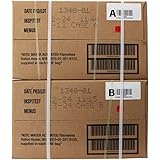Understanding the Importance of Preparedness
Why Emergency Preparedness Matters
As a parent, one of the most important things I’ve learned is how crucial it is for kids to be prepared for emergencies. We often think, “It won’t happen to me,” but the truth is that emergencies can strike at any time. Whether it’s a natural disaster, a fire, or even a sudden illness, understanding these situations can make a huge difference in keeping our kids safe.
Teaching this concept to children helps to build a sense of security. They feel empowered knowing that they have the skills to respond effectively. I’ve always explained to my kids that being prepared doesn’t mean living in fear—it means being smart and ready to face whatever might come our way.
Moreover, preparing them for emergencies fosters resilience. They’ll learn that setbacks happen, but with the right knowledge and tools, they can navigate through challenges confidently.
Recognizing Potential Emergencies
After establishing the importance, the next step is to help kids recognize the types of emergencies they might face. I’ve found it helpful to have open discussions—like family meetings—where we talk about various scenarios, from natural disasters like earthquakes and floods to more day-to-day situations like getting lost in a crowded place.
This is more than just a talk; it’s also about storytelling. I share personal experiences or news stories that they can relate to. Kids are equipped to absorb knowledge through stories. I weave in lessons amidst exciting tales, making the serious talk a little less intimidating!
Sometimes, I let them brainstorm what they think would be an emergency. Kids have vivid imaginations, and it’s interesting to hear their ideas. This makes them more engaged, and they’ll have a clearer understanding of what circumstances require action.
Assessing Their Comfort Levels
Every child is wired a little differently. Some kids take to the idea of emergency preparedness like a fish to water, while others may need more encouragement. I always check in with my kids about how they feel regarding these discussions. It’s crucial to gauge their comfort levels so I don’t overwhelm them.
It’s often helpful to ask open-ended questions like, “How do you feel about what we talked about?” or “What would you do if…?” This gives them space to express their thoughts and feelings, and it allows me to tailor our discussions to their emotional readiness.
== > What if ... Get a FREE Subscription to PREPARE
Another thing I’ve done is role-playing. It can be a fun way to put knowledge into action without it feeling too heavy. We assign roles and act out different emergency scenarios. This practice helps them internalize what they’ve learned and reduces anxiety about the unknown.
Creating an Emergency Plan Together
Building the Plan
Creating an emergency plan is another key step in our preparation. I sit down with my kids to map out what our family’s plan will look like. We’ve talked about emergency contacts, escape routes, and even where to meet up if we get separated.
Involving them in the planning process is critical! Their opinions matter, and they often have great ideas. We use a whiteboard to jot down everything—we even make it colorful and exciting! Making our plan visually appealing adds an element of fun to it.
Plus, including all family members ensures everyone knows their roles. It’s a bonding experience, and it really helps solidify the plan in their minds. The more included they feel, the more responsibility they’ll take in understanding it.
Practice Makes Perfect
Once we have our plan in place, practicing it is crucial. I set aside time for practice drills, and we take turns being in charge. This sports-like approach makes it feel more like a game than a chore. During these drills, kids get to learn what to do in a low-stress environment.
I like to mix it up, changing scenarios to keep things interesting. Maybe one day we simulate a fire drill, and the next we practice what to do if there’s an earthquake. Keeping them engaged is key to maintaining their interest and making the lessons stick.
After our drills, we sit down and discuss how things went. What went well? What could we improve? This reflective practice allows them to voice their thoughts and helps us all to improve our plans continuously.
Reviewing and Updating the Plan
Finally, we regularly review and update our emergency plan. Kids grow and change, and so do our circumstances. I typically schedule a check-in every six months or so. It’s our chance to revisit, revamp, and keep ourselves fresh on everything we’ve learned together.
Get Preparedness and Self-Reliance Tips. Subscribe Now!
During these reviews, we talk about any new threats or changes in our environment. Maybe we’ve moved to a new house or a friend has introduced a new emergency that needs addressing. Keeping our discussions relevant shows the kids that preparedness is not just a one-time lesson.
This process fosters a habit of mindfulness. They learn to pay attention not just to emergencies, but to the overall safety and well-being of themselves and those around them, which is an invaluable life skill.
Empowering Through Knowledge
Teaching Basic Skills
Alongside having a plan, I focus on teaching my kids some essential life skills that can be extremely helpful during emergencies. For instance, I teach them how to safely call for help—like using a phone or finding an adult. They practice dialing emergency numbers and knowing their address.
We also cover first-aid basics. Knowing how to address minor injuries can empower my kids. Simple things like how to clean a scrape or what to do if someone has a cut goes a long way in bolstering their confidence.
And when it comes to staying calm, we focus on breathing techniques. I often tell them, “Taking a deep breath can help us think better.” It’s about giving them tools to manage their emotion during tough times.
Encouraging Communication
Having open channels of communication about emergencies is essential. I encourage my kids to share their worries or fears. It’s crucial that they know they can come to me with any questions or concerns they may have, no matter how silly they feel it is.
We have “emergency chats” regularly at home. This is a time to talk freely about what’s on their minds. Sometimes it’s humorous, and sometimes it’s more serious. They get to engage with their feelings, which builds trust and understanding within our family.
I also emphasize the importance of teamwork. When emergencies do arise, everyone must communicate. I encourage them to practice clear and calm messaging, whether it’s to a family member or a helper outside of our home.
Building a Support Network
When emergencies arise, having a solid support network can be invaluable. I teach my kids the importance of knowing their neighbors and when to seek help. It’s important to create a sense of community, so we make a habit of getting to know the families that live around us.
In our neighborhood, we have emergency contact lists that include not only family members but also trusted neighbors. I emphasize that sometimes emergencies require stepping outside your bubble—for your safety and the safety of others.
This is part of creating a safety net for them. They need to recognize that their world is bigger than just our home, and knowing who to turn to can often make all the difference.
Frequently Asked Questions
1. Why is it important to prepare children for emergencies?
Preparing children for emergencies helps them understand potential risks and equips them with the skills to respond appropriately, reducing fear and building resilience.
2. How can I involve my children in developing an emergency plan?
You can include your kids in discussions about potential emergencies, brainstorming ideas, and even assigning roles in the plan. Make it fun and engaging to get their input!
3. What types of emergencies should we prepare for?
Common emergencies can include natural disasters (like earthquakes, floods), medical emergencies, fires, or scenarios like getting lost. Tailor your plan to fit your family’s specific needs.
4. How often should we review and practice our emergency plan?
It’s a good practice to review your emergency plan every six months and conduct practice drills throughout the year to ensure everyone is familiar with the procedures.
5. What basic skills should children learn for emergencies?
Children should learn to make emergency calls, basic first-aid skills, and techniques to manage stress, like breathing exercises. Empowering them with knowledge is key!
Get Preparedness and Self-Reliance Tips. Subscribe Now!
Related Content
Hitituto Rain Ponchos for Adults - Extra Long Emergency Poncho with Hood, 6/12/24 Family Pack Raincoat, Home Survival Kits
$9.99 (as of December 25, 2025 18:19 GMT -05:00 - More infoProduct prices and availability are accurate as of the date/time indicated and are subject to change. Any price and availability information displayed on [relevant Amazon Site(s), as applicable] at the time of purchase will apply to the purchase of this product.)Augason Farms Dehydrated Chopped Onions Can, Emergency Food Supply, Everyday Meals, 130 Servings
$11.47 (as of December 25, 2025 18:19 GMT -05:00 - More infoProduct prices and availability are accurate as of the date/time indicated and are subject to change. Any price and availability information displayed on [relevant Amazon Site(s), as applicable] at the time of purchase will apply to the purchase of this product.)Military MRE Single Meal Inspection Date May 2025 or Newer(Chili & Macaroni)
$19.50 (as of December 25, 2025 18:19 GMT -05:00 - More infoProduct prices and availability are accurate as of the date/time indicated and are subject to change. Any price and availability information displayed on [relevant Amazon Site(s), as applicable] at the time of purchase will apply to the purchase of this product.)Wornick Sopacko, Ameriqual MRE Meals Ready to Eat Inspection 2025, 2026 or Better, Emergency Food Supply, Survival Camping Outdoor 12 Pack(A & B Case Bundle, 2, Count)
Now retrieving the price.
(as of December 25, 2025 18:19 GMT -05:00 - More infoProduct prices and availability are accurate as of the date/time indicated and are subject to change. Any price and availability information displayed on [relevant Amazon Site(s), as applicable] at the time of purchase will apply to the purchase of this product.)





